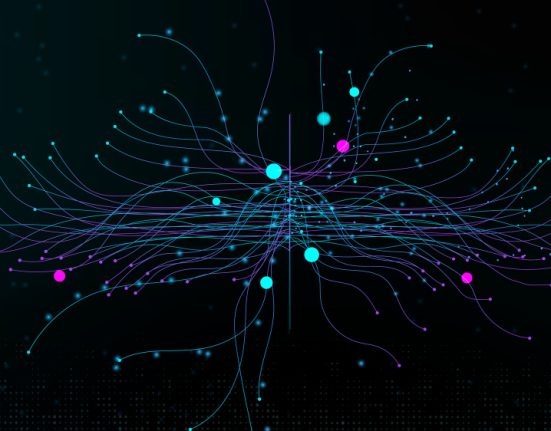Artificial Intelligence (AI) has revolutionized the way we approach problem-solving in the modern world, and at the heart of this revolution lies the concept of neural networks. Inspired by the structure and functioning of the human brain, neural networks are computational systems designed to process data, recognize patterns, and make decisions. But how do they work, and where are they used in real-world scenarios? Let’s dive into the fascinating world of neural networks.
What Are Neural Networks?
At its core, a neural network is a series of algorithms that aim to recognize underlying relationships in data through a process that mimics the way the human brain operates. It consists of layers of interconnected nodes, also known as neurons. Each neuron receives inputs, processes them, and passes the output to the next layer of neurons. This layered structure is what enables neural networks to learn complex patterns and perform sophisticated tasks.
The basic building blocks of neural networks are:
- Input Layer: This is where the data enters the network. Each node in this layer represents a feature of the data.
- Hidden Layers: These layers process the inputs received. The number of hidden layers and their configuration determine the complexity of the network.
- Output Layer: This layer provides the final result, such as a classification label or a numerical prediction.
How Neural Networks Learn
Neural networks learn through a process called training, which involves feeding the network data and adjusting its parameters to minimize error. The primary algorithm used for training is called backpropagation, which works in conjunction with an optimization method like gradient descent.
- Forward Pass: Data is passed through the network, layer by layer, to compute the output.
- Loss Function: The difference between the predicted output and the actual result is measured using a loss function.
- Backpropagation: The error is propagated backward through the network to adjust weights and biases, reducing the error in subsequent iterations.
- Iteration: This process is repeated multiple times with different data points until the network achieves acceptable performance.
The ability of neural networks to learn from data makes them incredibly powerful, but it also means they require large datasets and significant computational resources to perform effectively.
Types of Neural Networks
Over time, various types of neural networks have been developed to cater to different applications. Some of the most common ones include:
- Feedforward Neural Networks (FNNs): These are the simplest type, where information flows in one direction from input to output.
- Convolutional Neural Networks (CNNs): Designed for image and video processing, CNNs excel at tasks like object detection and facial recognition.
- Recurrent Neural Networks (RNNs): These are suited for sequential data like time series or text, as they have memory to retain information from previous inputs.
- Generative Adversarial Networks (GANs): GANs consist of two networks—a generator and a discriminator—that compete to create realistic data, often used in image synthesis.
- Transformers: Popular in natural language processing, transformers are the backbone of models like GPT and BERT.
Real-World Implementations
Neural networks have found applications across a wide array of industries, revolutionizing the way tasks are performed. Below are some notable examples:
1. Healthcare
Neural networks play a vital role in modern healthcare, from diagnosing diseases to predicting patient outcomes. For instance, CNNs are used to analyze medical images, identifying anomalies such as tumors or fractures with high accuracy. Similarly, RNNs are applied in genomic sequencing and drug discovery.
2. Finance
In the financial sector, neural networks are employed for fraud detection, algorithmic trading, and credit risk assessment. By analyzing vast amounts of transactional data, they can identify unusual patterns indicative of fraudulent activity.
3. Automotive
The advent of self-driving cars is largely powered by neural networks. Autonomous vehicles use CNNs for image recognition to detect road signs, lanes, and obstacles, while RNNs help predict the behavior of other vehicles and pedestrians.
4. Retail and E-Commerce
Recommendation systems in platforms like Amazon and Netflix rely on neural networks to suggest products and content tailored to individual preferences. These systems analyze user behavior and preferences to enhance customer experience.
5. Entertainment
From creating deepfake videos to composing music and generating art, neural networks have opened up new possibilities in creative fields. GANs, in particular, have gained attention for their ability to produce highly realistic synthetic media.
6. Natural Language Processing
Neural networks power applications like language translation, sentiment analysis, and chatbots. Transformers, for example, are widely used in conversational AI systems to generate human-like responses.
Challenges and Limitations
Despite their incredible capabilities, neural networks are not without challenges. Some of the key issues include:
- Data Dependency: Neural networks require vast amounts of labeled data for training, which can be difficult and expensive to obtain.
- Computational Costs: Training large neural networks demands significant computational power, often necessitating specialized hardware like GPUs and TPUs.
- Interpretability: Neural networks often function as black boxes, making it challenging to understand how they arrive at specific decisions.
- Overfitting: When a network learns the training data too well, it may fail to generalize to new, unseen data.
- Ethical Concerns: Applications such as deepfake generation raise ethical questions about misuse and privacy.
The Future of Neural Networks
As technology advances, the capabilities of neural networks continue to expand. Emerging trends include:
- Neural Architecture Search (NAS): Automated methods for designing optimal network architectures.
- Federated Learning: Training models across decentralized devices without compromising data privacy.
- TinyML: Deploying neural networks on low-power devices for edge computing applications.
- Explainable AI (XAI): Developing methods to make neural networks more interpretable and transparent.
The integration of neural networks with other technologies like quantum computing and IoT promises even greater innovation in the years to come.
Conclusion
Neural networks represent one of the most transformative technologies of the 21st century. By mimicking the human brain, they have enabled machines to perform tasks once thought to be the exclusive domain of humans. From healthcare to entertainment, their applications are vast and continually growing. However, addressing challenges such as data dependency and interpretability will be crucial to unlocking their full potential responsibly. As we look to the future, the possibilities for neural networks are limited only by our imagination and dedication to ethical innovation.














Leave feedback about this